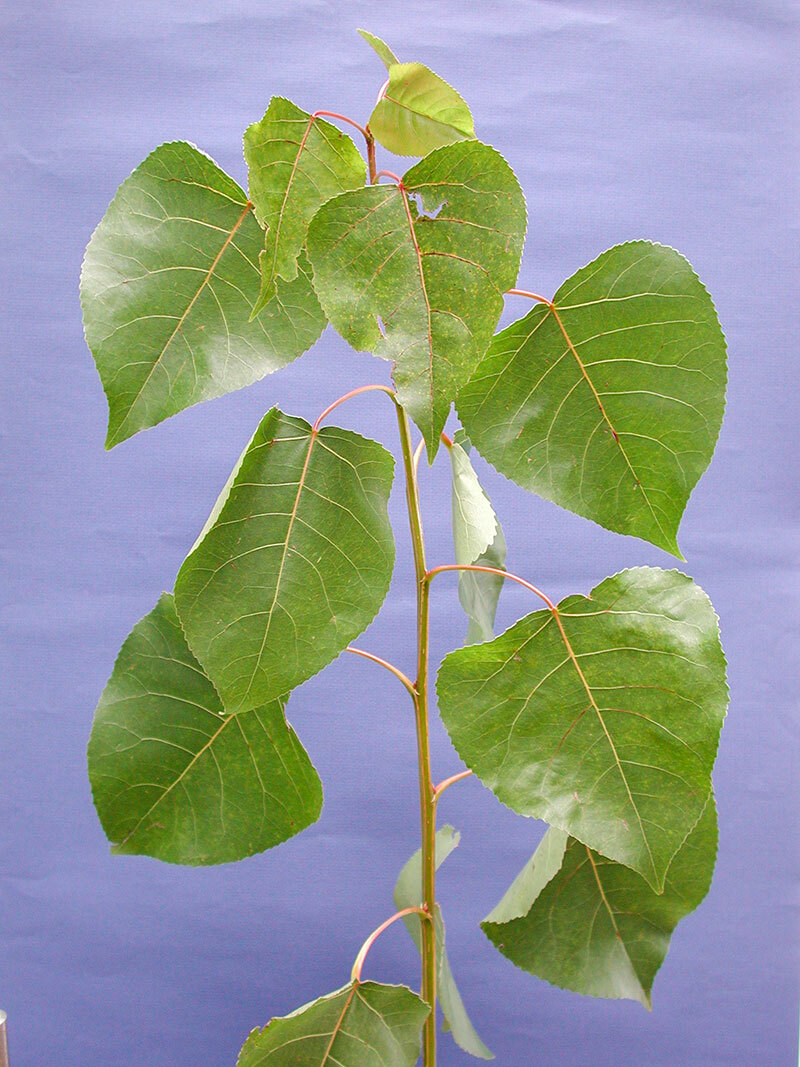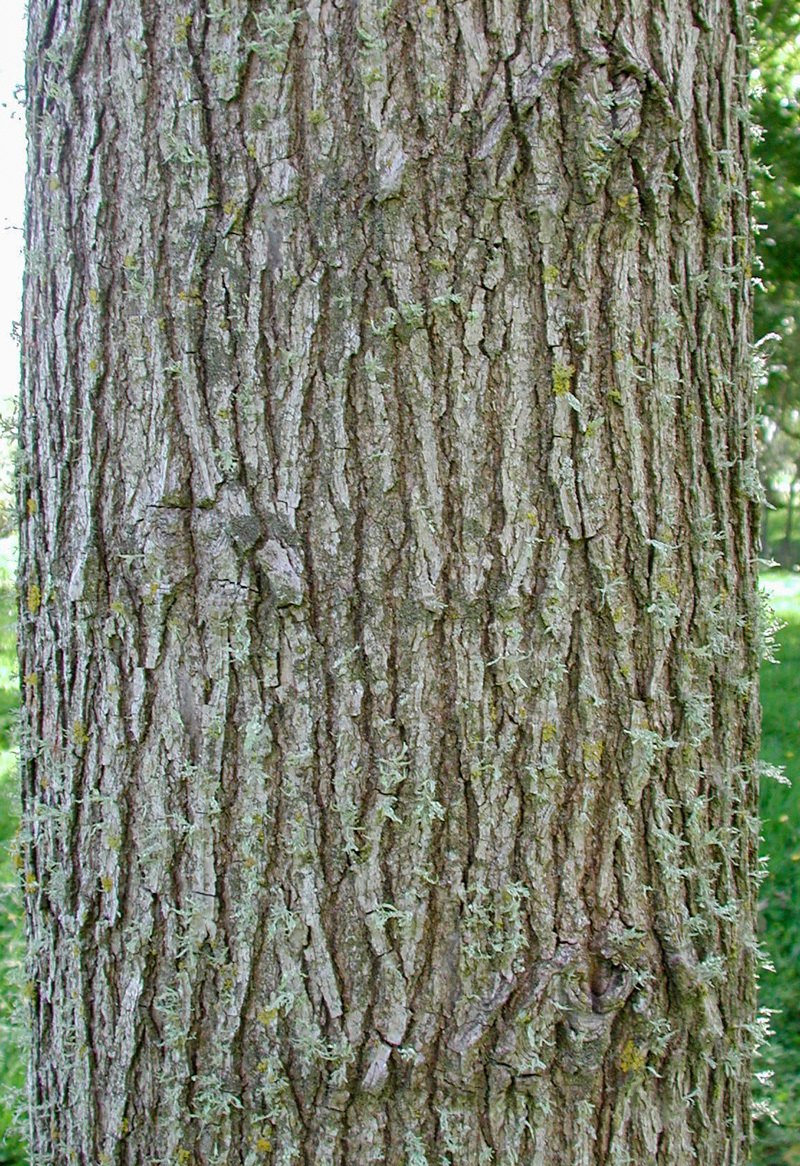
Key to Poplars and Willows
in New Zealand
Version 1.0.5
'Kawa'
- 0. Poplar or Willow?
- Looks like a poplar -> Poplar - 1. Crown shape
- Narrow crown (or uncertain) -> 2. Bark
- Bark is rough -> 4. Bark and form
- Trunk dark brown with uniform parallel ribbing, Leaf heart-shaped, green upper surface, pale grey-green lower surface, midrib and petiole are tinged pinkish on the upper surface -> 'Kawa'
Populus deltoides x P. yunnanensis ‘PN 35’ NZ 5006
‘Kawa’, bred in NZ in 1974, is a cross between P. deltoides and P. yunnanensis from China. It was released commercially in 1986.
Identification
‘Kawa’ leaves are heart-shaped, and green on the upper surface and pale grey-green below. The midrib and petiole are tinged pinkish red on the upper surface. Due to the P. yunnanensis parentage, the leaves remain on the tree for much longer than the P. x euramericana hybrids, and turn bright yellow before leaf fall.
‘Kawa’ has a narrow crown, excellent apical dominance, and a high basic density of 360 kg/cubic metre. ‘Kawa’ is male.
Typical uses, site requirements, pest and disease resistance
‘Kawa’ favours moist areas that do not get excessive wind, and is not very frost tolerant. It is suitable for soil conservation, amenity purposes, firewood blocks and timber. ‘Kawa’ should be planted in sheltered sites such as valley floors, gullies and terraces. It is widely used in western and northern regions of New Zealand.
It has good possum resistance, and rust resistance in most situations.
Performance in trials
Widely-spaced age 9 ‘Kawa’ at two moist fertile river terrace sites in Gisborne (ann. rainfall 1100 mm) had an average height and diameter (dbh) of 17.3 m and 24 cm respectively, while the same-aged trees replicated in a trial on exposed hill country had an average height and dbh of 13.5 m and 22 cm.
The Fan Nelder trial (below left) is age 7 on a sheltered site in Gisborne, and average height is 14.5 m and dbh is 18 cm for trees spaced at 4-11 m apart.
Similar growth rates of 2 - 2.5 m per year have been recorded in the Bay of Plenty, Waikato, and Northland. Lower growth rates of 1 - 1.5 m per year are more typical in cooler or drier regions such as Manawatu, Wairarapa and Hawkes Bay.




